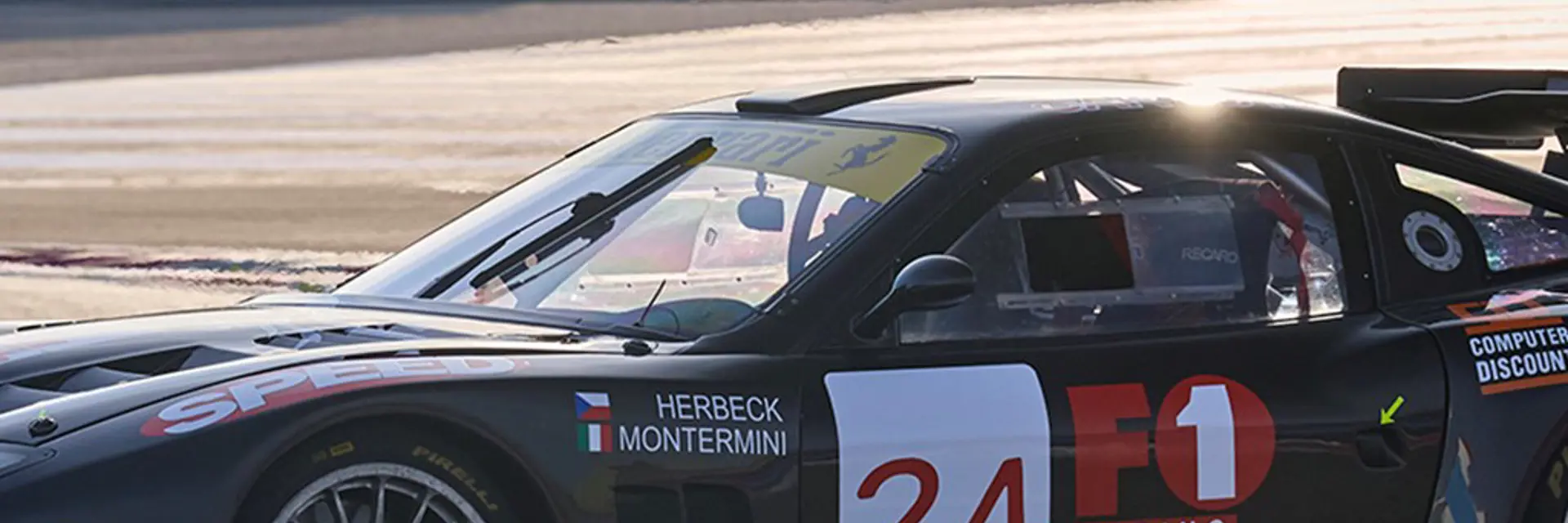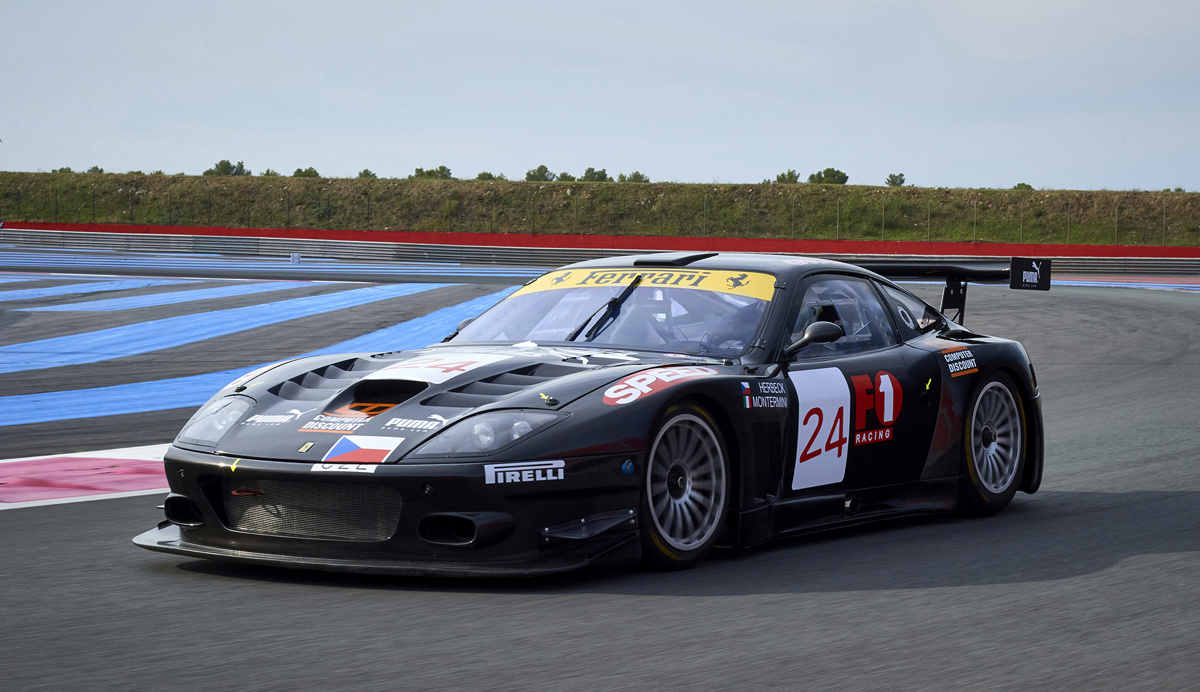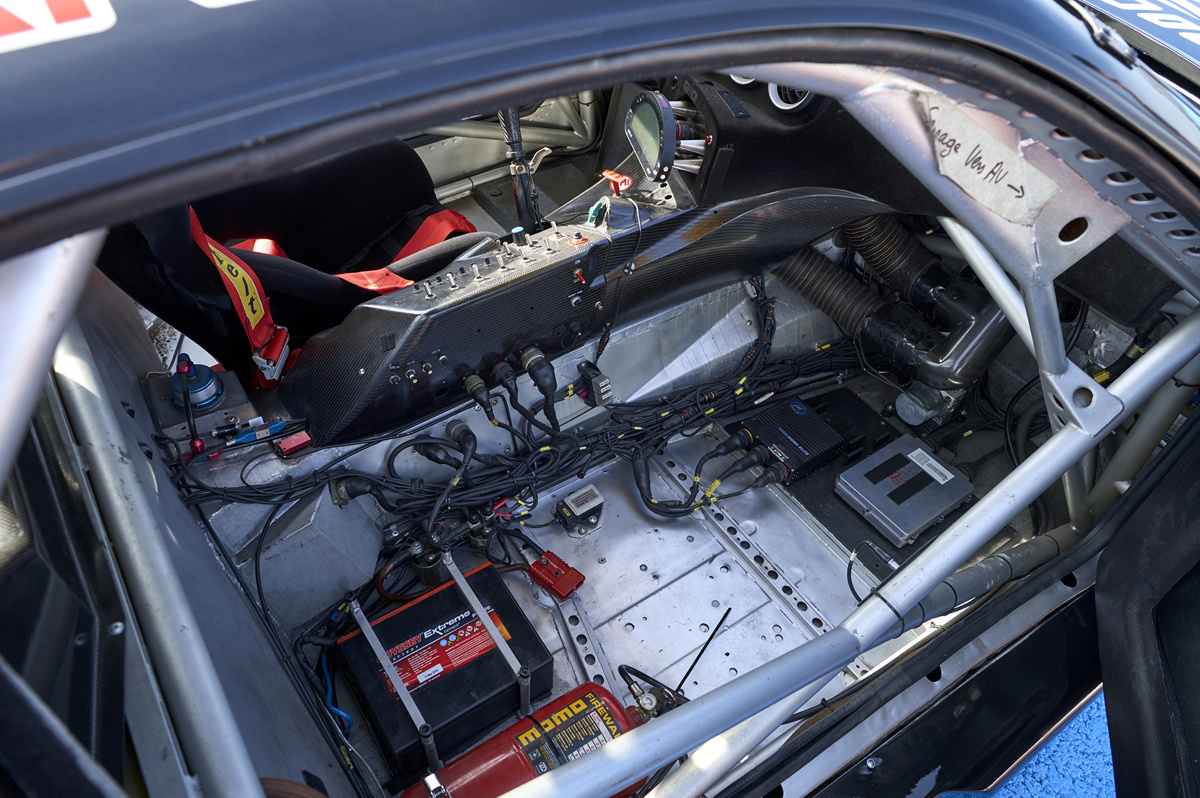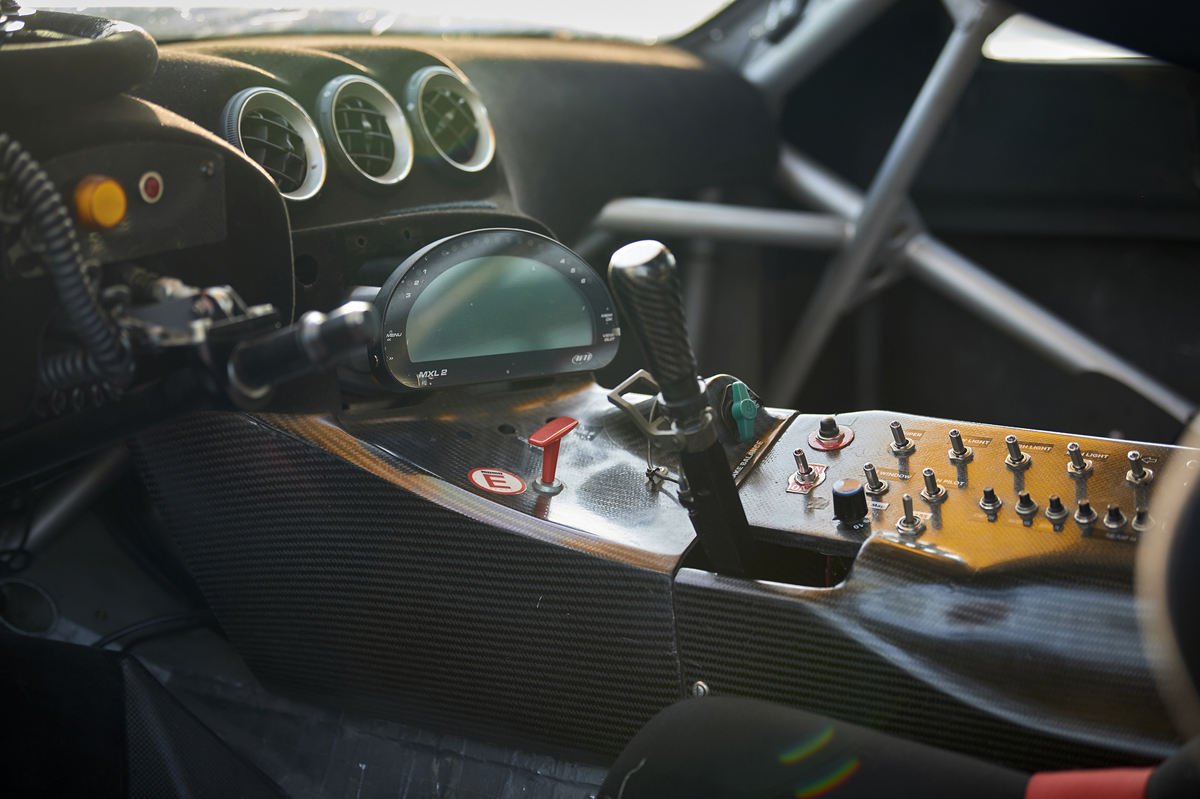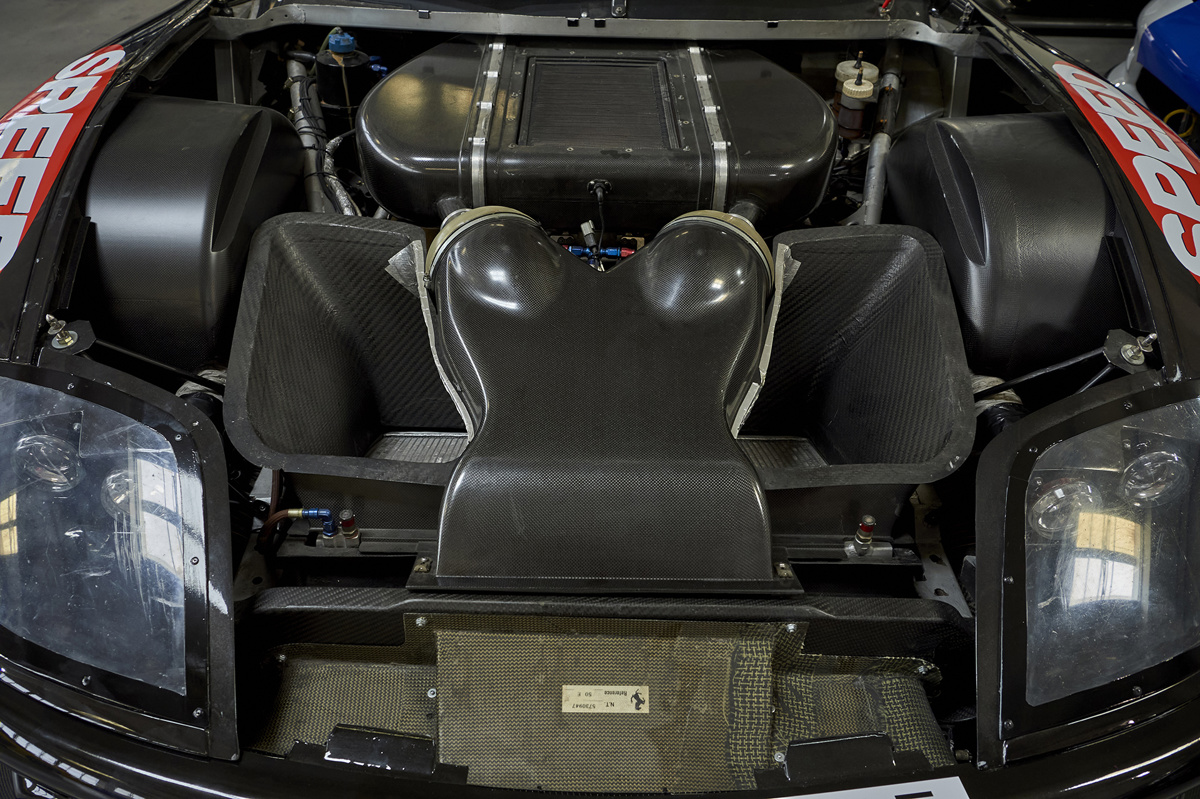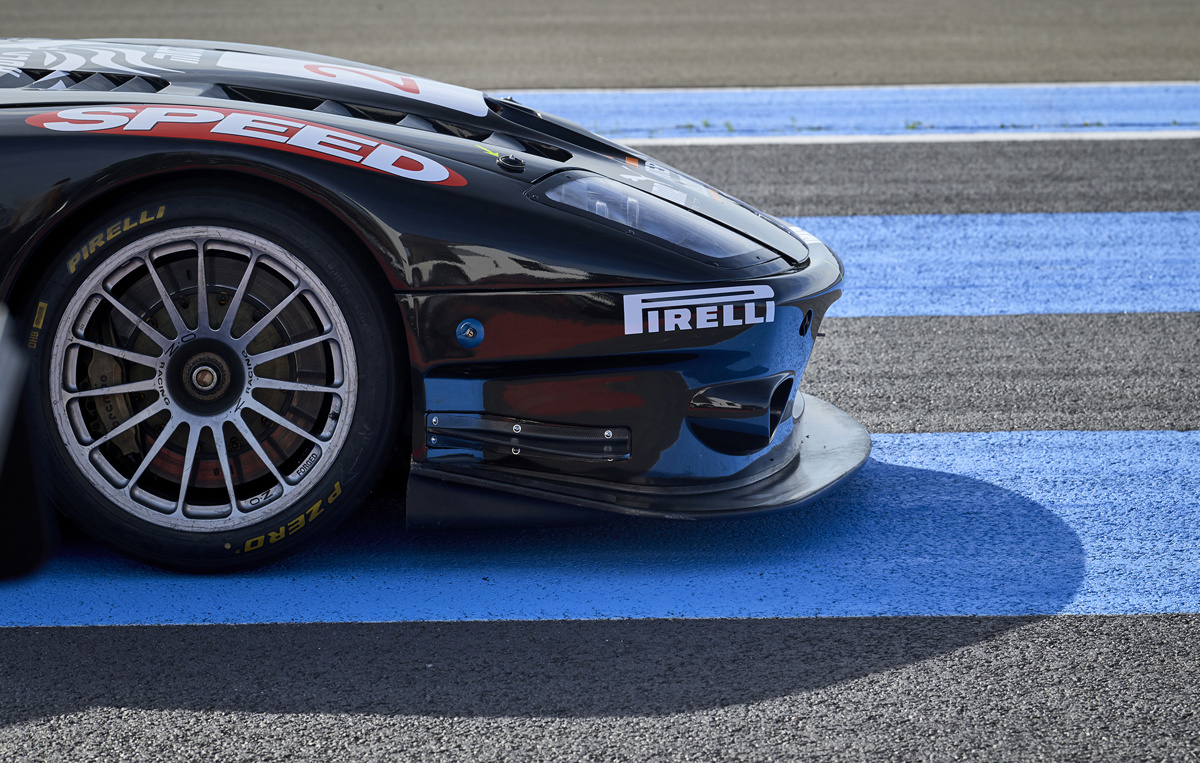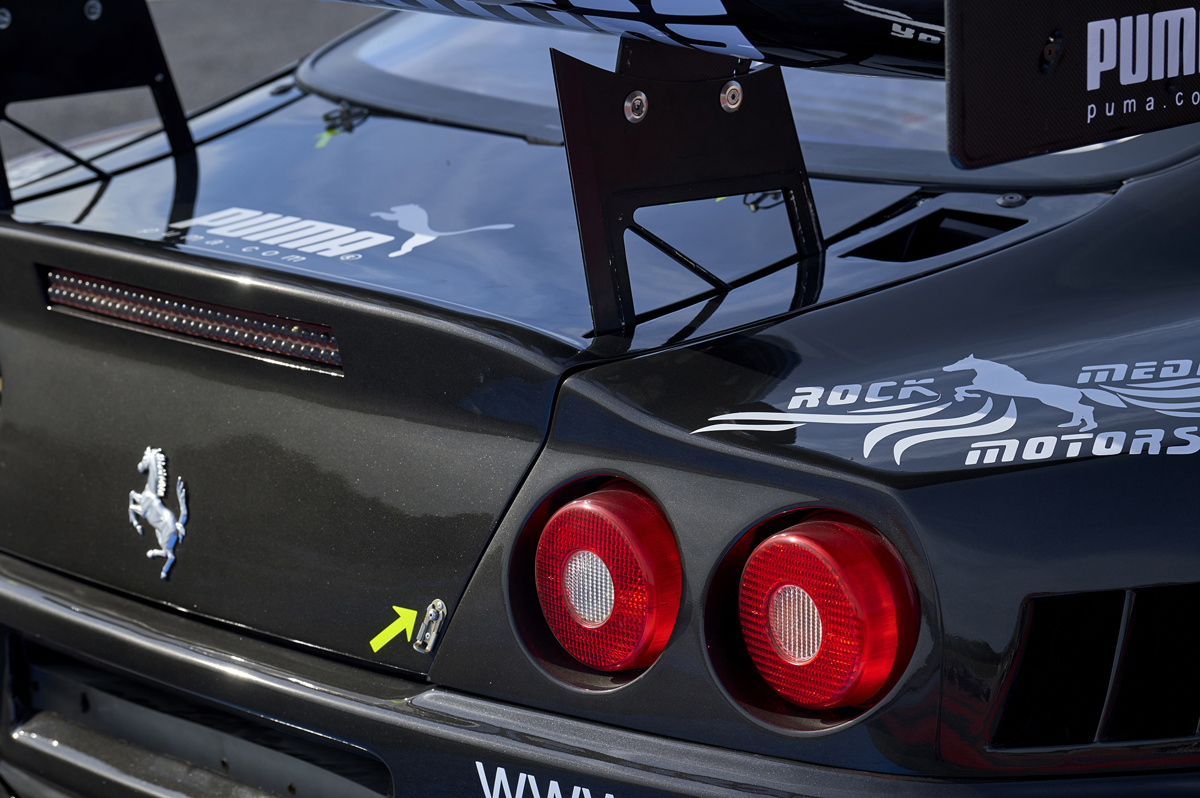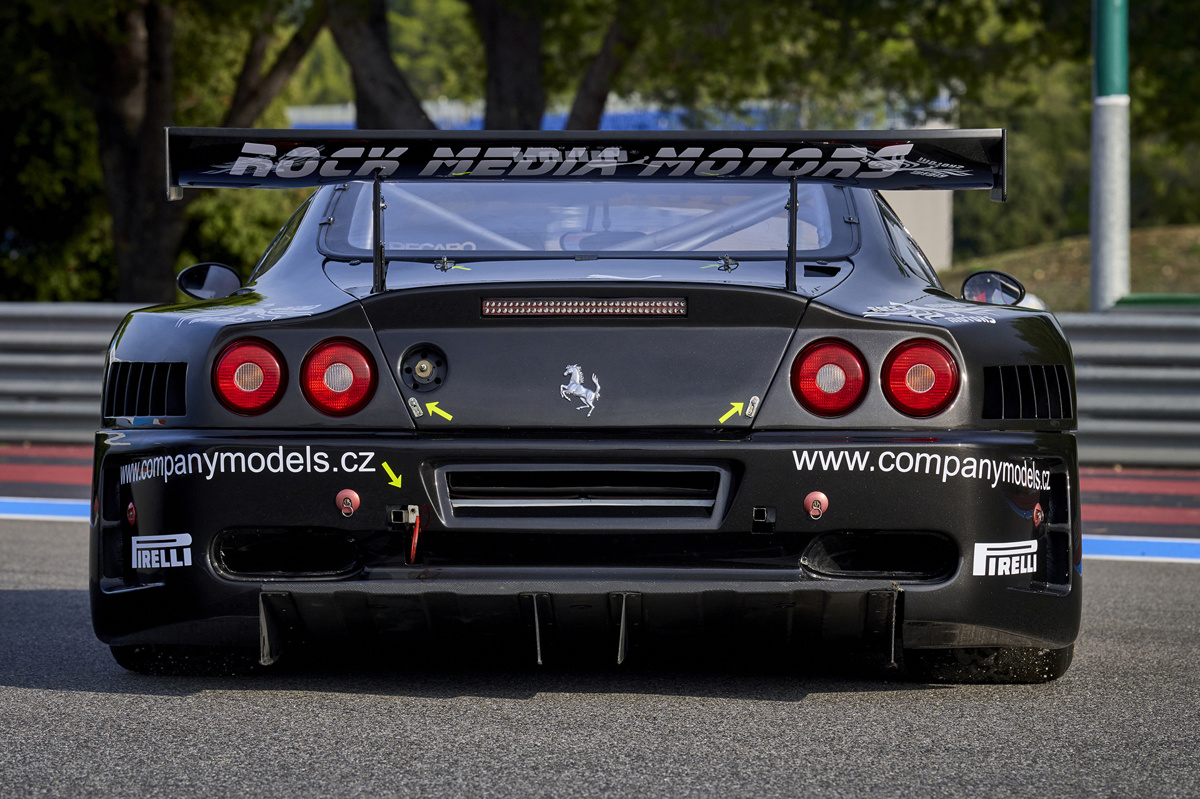Though the years, makes, and models differ considerably, there is something sacred about the format used for most competition cars made by Ferrari. A front-mounted V-12 engine necessitates a long-hood, cab-rearward design. Powering the rear wheels makes for better balance and uncorrupted handling. Even from the first competition-derived car to wear the Ferrari badge, the 125 S from 1947, we can see how this fundamental formula makes for a dramatic driving stance, both for the pilot and passengers, as well as for any onlookers. The front-mounted V-12 layout proved to be pivotal to Ferrari’s early success on the race track, with cars of this setup winning the 24 Hours of Le Mans an amazing six times, along with eight overall victories in the Mille Miglia and eleven victories in the Tour de France as well as hundreds of others across a variety of competition venues.
While engine technology itself has no doubt changed, and aerodynamics have become more of a science and less of an intuitive art, all Ferrari competition models share a sporting lineage that traces back to the first generation of purpose-built racers to wear the Scuderia Ferrari badge. In the past at least, that lineage proved a bit more linear. Today, like virtually every automaker that competes in sports car racing, Ferrari have chosen only mid-engine models to carry the torch for the brand’s motorsport division. And though the 488 GTE and 488 GT3 are crafted to deliver the ultimate in speed, steering, feel, and maneuverability within their respective race classes, the experience from the driver’s seat of staring out at a generous hood with a twelve-cylinder Ferrari engine is incomparable. RM Sotheby’s proudly offers this stunning selection from The Guikas Collection, set to sell without reserve on 19 November 2021:
2005 Ferrari 575 GTC
Estimate: €3,000,000 - €4,000,000 | Offered Without Reserve
Without exaggeration, this front-engine Ferrari V-12 represents the end of an era. Debuting at the international auto show in Frankfurt in 2003, it is interesting to remember that the early 2000s represented a turning point for the Modenese brand itself. Though the world’s automotive markets were still suffering the effects of an economic downturn, Ferrari was enjoying a record sales year, with a portfolio of mature sports and supercars developed under the leadership of Luca di Montezemolo beginning to hit its stride. Despite the success of the 333 SP in the 1990s, Ferrari had moved to only offering 8-cylinder variants for their racing customers with the 360 Challenge and 360 GT. However, following the success displayed by Prodrive after they took a 550 Maranello and modified it into a full GT racer, Ferrari embarked on a similar program for their customers looking to go racing at this highest level. This project, based on the evolved 575M Maranello, led to the now-iconic 575 GTC, the last V-12 front-engine racing car ever to be produced by Ferrari, with this particular car, chassis 2224, being the very final, and therefore arguably most historically significant example of them all.
Inside the 575 GTC is all business. With the passenger seat removed, that space was reserved for the battery and fire extinguisher. Cocooned by a full, FIA-compliant welded roll-cage, the pilot of this front-engine example sat on a fixed-back chair made of carbon fibre.
Though the contemporary 575M Maranello famously featured an F1-style gearbox that was said to be derived directly from the Ferrari Formula 1 division, the gear selector in this 575 GTC is noticeably not activated by a pair of paddles. Designed by Xtrac, the same transmission specialists who are designing the new gearbox for Gordon Murray’s T.50 hypercar, the six-speed sequential manual shifter in the 575 GTC gives this example a stunning centerpiece for its interior cabin, and is still the preferred shift method for many professional drivers.
Underneath its sword-shaped silhouette, the lightweight materials used on this competition Ferrari added up to a scant 1,148 kg, nearly 600 kg less than the production model. With motive force provided by a 6.0-litre V-12 engine, featuring extra cooling vents for high-speed performance, the 575 GTC produced 600 horsepower, and the all-important power-to-weight ratio that its series production sibling could not match. With minimal sound deadening, this naturally aspirated engine is allowed to breathe at top volume, making for a genuinely thrilling noise, as this short video shot on Circuit Paul Ricard proves. In a significant bonus for bidders, this 575 GTC is offered with an original spare engine, making track days that much more tantalizing.
Speaking of production, this example, Ferrari chassis no. 2224, was made in extremely limited quantities, expressly for the purpose of privateer-funded racing. Only twelve examples of the 575 GTC were made between 2003 and 2005, making this one of the most uncommon Ferrari-branded sports cars ever made. This example was the twelfth constructed. Even though Ferrari was the last holdout in Formula One to run a twelve-cylinder engine, by this point in the mid-2000s, Ferrari had not used V-12 engines for their F1 program for over a decade. Many consider this very car to be the final V-12 race car made by the Ferrari factory. Its existence conjures a bygone era and represents the last in a breed of fine prancing horse-branded race cars.
With its auction date set for 19 November 2021, before the unmistakable backdrop of Circuit Paul Ricard in Le Castellet, France, in many ways, this competition-grade Ferrari will be perfectly at home on a racetrack. For a detailed race history, as well as to view extensive documentation and register interest, please click this link.
What do you think: Will this model be the last V-12 race car ever made by Ferrari? Only time will tell…

